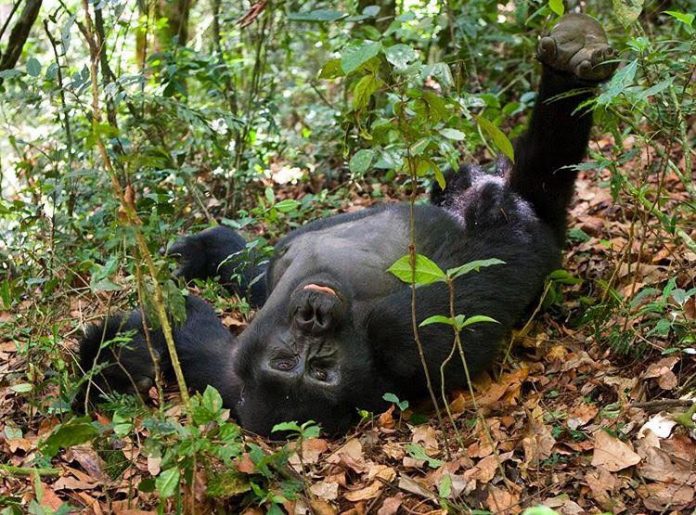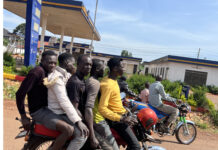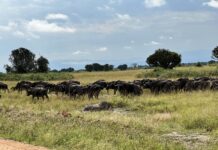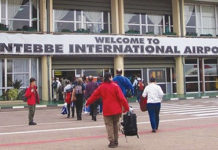Uganda lie astride the Equator with the line dissecting the country into two. It is one of the few countries in the world where you can go from the southern to the northern hemisphere in a split second. Due to the country’s position along the Equator, it is worth saying that you can enjoy a holiday in Uganda any time of the year.
Unlike other parts of the world, there is either a dry season or a wet/rainy season in Uganda. The country generally has two dry and two wet season as we categorize the months below;
Visiting Uganda in March, April, and May
These months are regarded as the shorter rains months. March is the beginning of the rainy season, April the rains intensify and here you get an opportunity to enjoy one of Uganda’s delicacy during the rainy season – the grasshoppers, then in May the rains reduce as we gear towards to dry season.
During the months of April, and May the Uganda Wildlife Authority usually runs promotional rates for gorilla and chimpanzee permits. The lodges also extend offers to visitors during these months and you might get an opportunity to enjoy a visit to Uganda at a very reasonable price as opposed to other times of the year.
At the time of writing this article, it is March and there are limited signs of rains although evening are characterized by drizzles hence, it is worth saying this times is good for travel if you can make it. The national parks and game reserves are also not very much flocked by people hence providing the sense of exclusivity.
Coming from the dry season, these months also enable you to indeed marvel at the beauty of the country exhibiting much more green which is ideal for nature lovers.
Visiting Uganda in June, July, August, and September
The month f June is the end of the rainy season as well as the start of the dry season. July and August are the driest month of the year characterized by a second term school holiday for Primary and Secondary school going children. September sees the end of the dry season.
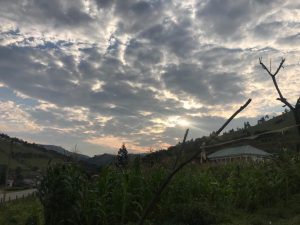
This period is also referred to as the peak season in the tourism perspective. Most tourists are received in this time of the year. Most of the lodges charge their normal advertised rates, Uganda Wildlife Authority do not run promotional rates, and some occupancy levels for most lodges are at 100%. The dust in the roads is also a lot because many vehicles are moving and there are limited rains experienced.
In case you are planning to travel to Uganda during this period, be sure to book way in advance for your accommodation as well as activities especially the gorilla and chimpanzee permits.
Some tourists do Self Drive in Uganda trips around this time, it is highly recommended that you book your car well in advance to avoid disappointments of last minute bookings. Also be sure to reserve your preferred accommodation and all the required permits.
Visiting Uganda in October and November
October and November are the second rainy season in Uganda. The month of November is the wettest month of the year and also very much associated with the highest number of grasshoppers, and you are most likely able to see people hawking these delicacies. There is generally a lot of food during this period as people are harvesting what they sowed.
In November, Uganda Wildlife Authority also runs low season promotional rates for the gorillas and chimp permits. The roads at the different national park are slippery during this period. In case you plan to visit Kidepo Valley National Park, look out for the seasonal rivers in this area that flow during the rainy season. It is highly advisable that for any trips around the country, be sure to use a 4 wheel drive vehicle.
Visiting Uganda in December, January and February
These months are referred to as the first dry spell in the country. December is characterized by the end of the rainy season, which usually is until the middle of the month and the start of the dry season. This month is also the beginning of the third term school holiday for primary and secondary school going children. During the Christmas period, there is a lot of movement especially by the local people who often go to the countryside to enjoy the festive season holidays with their families back home. Public transport during the dates leading to 25th December are sometimes double the normal going rate. Some local population also choose to go for holidays during this period hence, you are likely find a high number of people at the different tourist establishments.
January and February are dry months also followed by the end of the school holiday, and children preparing to go back for the first term. Normally, parents have spent big during the Christmas period and there is a reasonable scarcity of money during these months.
This period also has a reasonable number of tourists who usually prefer visiting during the dry months.
Visiting Uganda in the dry season vs the rainy season
It is common preference for people to visit during the dry season as opposed to the rainy season. This however is more subjective because some people have actually had more success during the rainy season as opposed to the dry season. Some recommendation are during the start of the rainy season where by wildlife are gathering around water sources at different locations to quench their thirsts. Boat trips on the Kazinga channel in Queen Elizabeth National Park and River Nile in Murchison Falls National Park are enjoyable with sights of elephants and buffaloes grazing on the banks and sometimes cooling off in the water.
Uganda being a tropical country and lying astride the Equator, it is reasonably hot all year round and the rains can come any times of the year. Be not surprised if you visited during July and August then you experience rains and in May, no rains at all. Most importantly, you should visit whenever you find time to visit, and why not take a swipe at the low season promos from lodges and Uganda Wildlife Authority?
Whether it is a dry season or rainy season, the evenings are always cooler thus, when visiting, be sure to carry along warm clothing especially if you intend to spend some time out counting the stars in the sky.
Some destinations like Kidepo Valley National Park and Murchison Falls National Park are really dry and hot during the dry season and the rains are a blessing to enjoy the vast scenery and wildlife found in these places. On the contrary, Bwindi and Mgahinga receive the most rainfall and are usually moist because of the forest cover, and the dry season would work best as the balance between the two sides.
It is worth mentioning that the Mystic Snow Capped Mountains of the Moon (The Rwenzoris) are found in Uganda, and these mountains have got snow at the top all year round. Most people prefer hiking the Rwenzori Mountains during the dry season to escape from the slippery surface associated with the rainy season.
Whichever time you choose to visit, be sure to pre-book all your activities and tours way before you travel to Uganda as it puts you at rest while you enjoy your holiday. The best time to visit would also depend on what kind of attraction you are interested in for instance, those who would like to come for the Bagisu initiation ceremony of circumcision, then it is advisable to visit in December towards the end of the calendar year. Note that this happens every even year.
For visitors interested in chimpanzee and gorilla tracking, please come with long sleeved shirts and long pants. Since the forests are always moist, you are advised to move with sturdy pair of walking boots and in case you have gardening gloves, better to carry them. Do not forget light rain gear. Walking sticks are provided by the rangers at times. For wildlife viewing while in the vehicles, do away with bright colored clothing but rather clothes that blend well with the environment.
We hope you enjoy your holiday into Uganda after going through what is involved in each month of the year. The above is only a guide but the decision is always yours to make.
